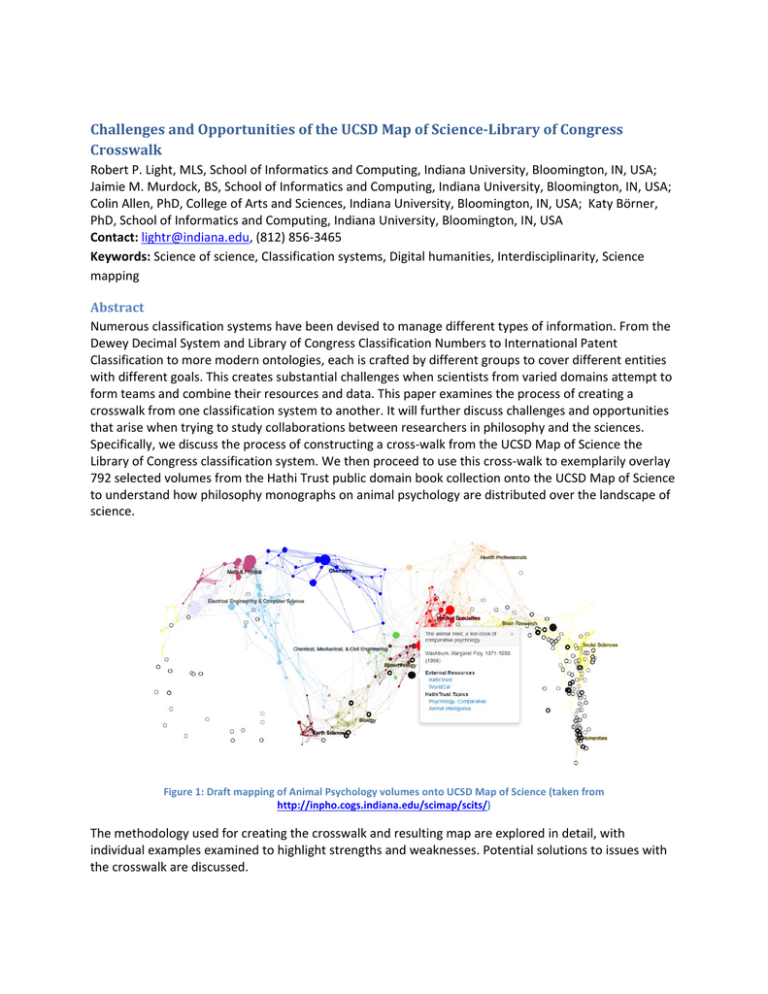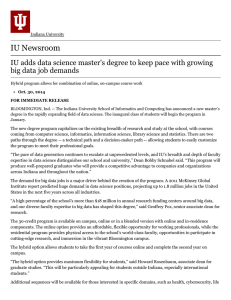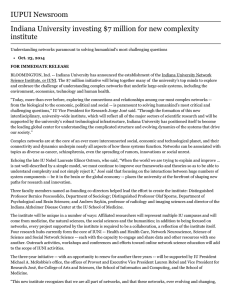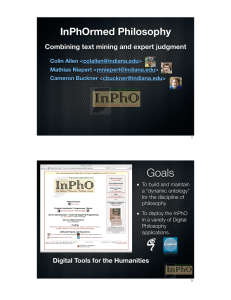Challenges and Opportunities of the UCSD Map of Science‐Library of Congress Crosswalk
advertisement

ChallengesandOpportunitiesoftheUCSDMapofScience‐LibraryofCongress Crosswalk Robert P. Light, MLS, School of Informatics and Computing, Indiana University, Bloomington, IN, USA; Jaimie M. Murdock, BS, School of Informatics and Computing, Indiana University, Bloomington, IN, USA; Colin Allen, PhD, College of Arts and Sciences, Indiana University, Bloomington, IN, USA; Katy Börner, PhD, School of Informatics and Computing, Indiana University, Bloomington, IN, USA Contact: lightr@indiana.edu, (812) 856‐3465 Keywords: Science of science, Classification systems, Digital humanities, Interdisciplinarity, Science mapping Abstract Numerous classification systems have been devised to manage different types of information. From the Dewey Decimal System and Library of Congress Classification Numbers to International Patent Classification to more modern ontologies, each is crafted by different groups to cover different entities with different goals. This creates substantial challenges when scientists from varied domains attempt to form teams and combine their resources and data. This paper examines the process of creating a crosswalk from one classification system to another. It will further discuss challenges and opportunities that arise when trying to study collaborations between researchers in philosophy and the sciences. Specifically, we discuss the process of constructing a cross‐walk from the UCSD Map of Science the Library of Congress classification system. We then proceed to use this cross‐walk to exemplarily overlay 792 selected volumes from the Hathi Trust public domain book collection onto the UCSD Map of Science to understand how philosophy monographs on animal psychology are distributed over the landscape of science. Figure 1: Draft mapping of Animal Psychology volumes onto UCSD Map of Science (taken from http://inpho.cogs.indiana.edu/scimap/scits/) The methodology used for creating the crosswalk and resulting map are explored in detail, with individual examples examined to highlight strengths and weaknesses. Potential solutions to issues with the crosswalk are discussed.








